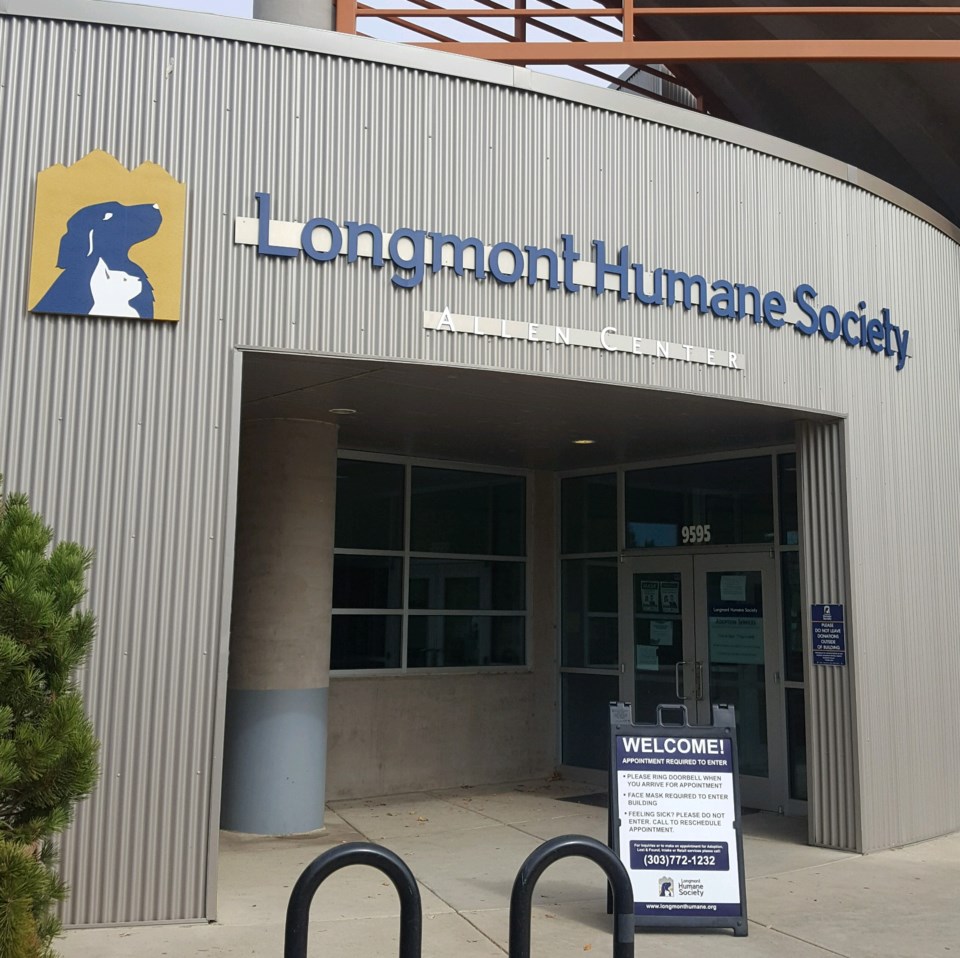By March of 2020, a majority of businesses and organizations were fighting to stay afloat as their staff, customers and clients put their lives on pause to adhere to COVID-19 quarantine mandates.
At Longmont Humane Society, or LHS, the pandemic had the opposite effect; business began ramping up. Today, LHS and humane societies nationwide are still reaping the benefits that COVID-19 had on pet adoption rates.
According to Rhea Moriarity, the director of shelter and clinic operations at LHS, at the same time LHS was forced to shut down in March last year due to COVID-19, the organization was flooded with applications from people wanting to foster animals.
LHS was closed to the public from March to May of 2020 and, during this time, the organization experienced a decrease in staff and volunteers. For those who remained working at the shelter, it was a challenge to keep up with the overwhelming number of people applying to foster animals, Moriarity said.
The challenge to keep up with foster home applications was not only due to a shortage in staff — it was a result of the shelter not having enough animals to provide.
“We had far more demand for animals than we did supply,” Moriarity said. “We had a lot more foster homes and applications to be foster homes than we were able to provide animals for.”
When LHS opened back up to the public in May of 2020, the number of foster home applications coming into the shelter decreased, as did the demand for animals.
At this time, another new trend began to emerge at LHS. In contrast to statistics from previous years, the shelter received significantly less animal surrenders — animals brought in by their owners for the purpose of re-homing them — and stray animals — animals brought in by members of the community or animal control agencies who have found them.
In 2019, a total of 3,880 animals were brought into LHS. The previous two years saw similar numbers, within 100 animals or less of 2019’s 3,880 number. In 2020, the shelter received nearly 800 fewer animals; a total of 3,077.
“That is a significant drop (in the number of animals per year) that we don’t normally see,” Moriarity said. Today, the shelter has yet to see a rebound to pre-pandemic numbers.
The drop in the number of animals brought into the shelter, in part, might have to do with the fact that a lot of the people who began fostering animals in the midst of the pandemic ended up adopting the animals, according to Moriarity.
Another of Moriarity’s theories is the significant lifestyle changes brought on by the pandemic.
“Animals that were problematic because of boredom or lack of attention are now able to stay in the home because peoples’ lifestyles have changed,” she said. “People who now work from home are able to spend more time with the animals and train them.”
Whatever the cause may be for less animals being brought into the shelter throughout the pandemic, LHS is not the only humane society whose numbers have been affected similarly.
PetPoint, a website that tracks “trends the animal welfare community is experiencing” nationwide, produces a weekly COVID-19 report that shows the numbers of homeless animals in the care of animal welfare organizations.
One PetPoint report for the week of March 14-20, 2021 combined the number of animals in 1191 animal welfare organizations across the country that week and compared it to data from the same week in March, 2019.
The study shows that, from March 14-20, 2021, there was an intake of 22,724 animals into the shelters. In the same week in March of 2020, the animal intake totalled 33,266.
Lower numbers of animals coming through animal welfare organizations, according to Moriarity, is beneficial for both the organizations and animals.
“Animal welfare is (a job) we kind of want to work ourselves out of,” she said, “so that we don’t have tons of homeless animals that we need to provide for. If those animals have homes — whether it’s a temporary foster home or a permanent adoptive home, that’s always preferable to having them in a shelter environment.”
With fewer animals to care for at a time, LHS has been able to shift their resources to better support the animals in the shelter and the owners who eventually adopt them.
Today at LHS, according to Moriarity, there is a heavier focus on the animals that are more highly in need — animals that have medical concerns or behavioral concerns — and helping those animals to receive the necessary care or training before they can be adopted.
As part of their goal to help keep pets in a home once they have been adopted, LHS aims to support pet owners and act as “a first resource as opposed to a last resort,” Moriarity said.
“(We are) focusing resources on helping pet owners who don’t want to surrender their animal but maybe have some life circumstances that are forcing the decision.”
If a pet owner needs help with medical costs or supplies for their pet, LHS can help provide those resources and more.
Unexpectedly, the pandemic inspired positive changes at LHS and other animal welfare programs nationwide. “It’s been a blessing,” Moriarity said.


